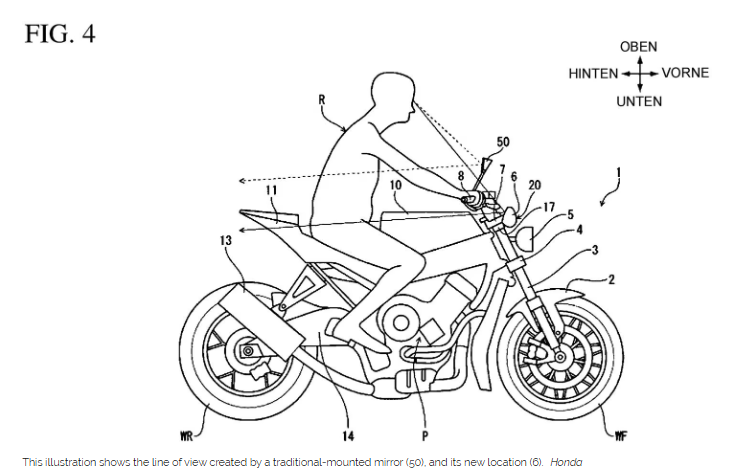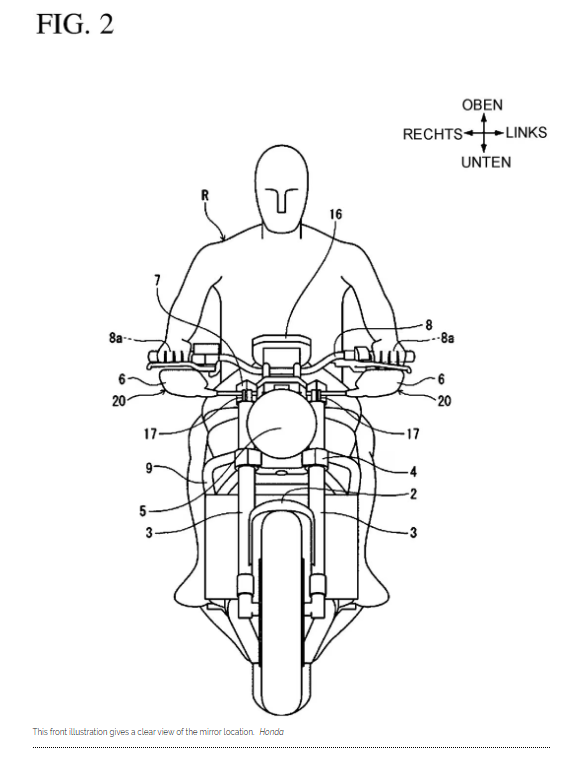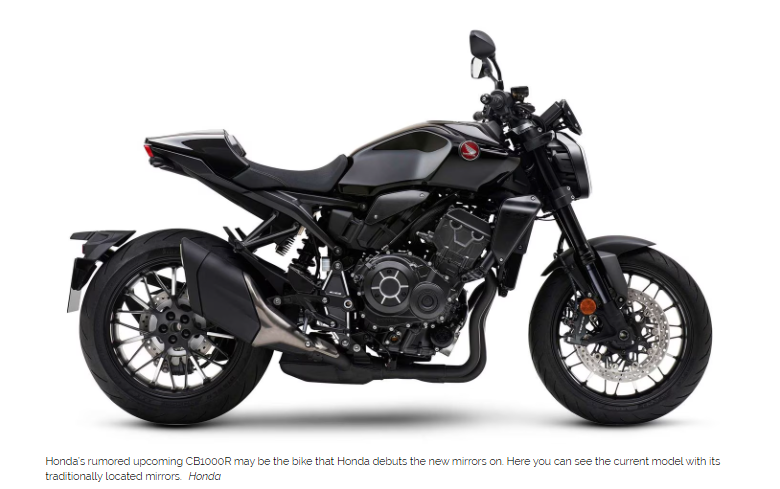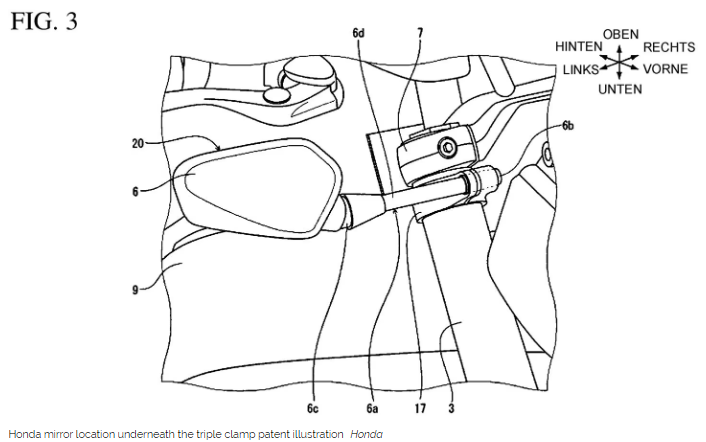You may not realize that there are many paths to developing mirrors for motorcycles. However, Honda has created a layout that promises not only to provide a better view of what’s behind, but also to offer handling benefits compared to conventional designs.
While logic may suggest that rearview cameras will eventually completely replace mirrors, the simplicity and versatility of a mirror is hard to beat. Cameras and screens have issues when it comes to adjusting to different light levels, and their fixed field of view means that you can’t stretch your neck to get a little more vision when it’s useful. Add to that the low cost of a piece of reflective glass and a series of legislative issues worldwide that make it difficult to adopt camera systems, and the traditional mirror is here to stay in the near future.

Since mirrors have been the norm for so long, it’s surprising to see that Honda has filed a patent application for a design that they believe is so different from others that it deserves patent protection. The idea itself is incredibly simple: Mirrors are mounted on conventional-looking stalks, but are fixed to the fork below the upper triple clamp and positioned under the handlebar rather than above.
There are three main advantages to the arrangement, as explained in the patent document. The first, and most important, is improved visibility. While mirrors hanging below the handlebars are not a new idea – there are many aftermarket bar-end mirrors on the market that are mounted this way – Honda’s design positions them slightly further forward so you can look over your hands to see them. The advantage comes from the fact that the vision reflected by the mirrors is below the level of your arms and elbows, so the view is unobstructed. In fact, this is an idea that is already used in a production motorcycle from Honda, the Hawk 11 cafe racer, only in Japan, based on the engine and frame of the Africa Twin. However, in the Hawk the mirrors are mounted on the fairing, which means they do not offer the other two advantages of the new version that the brand is trying to patent.


Together, these benefits make a compelling case for this type of mirror, and the brand already has bikes in development that could benefit from the design. The most significant, and closest to production, is the expected replacement for the CB1000R. A fairly detailed set of patent drawings depicting this bike, based on the frame and engine of the CBR1000RR, appeared last year, although with key styling elements – the headlight, tank, and tail – replaced by generic shapes. The mirrors shown in these drawings were also generic, so the next generation of the CB1000R, which is expected to be a much higher-performing machine than the current version, could very well be the debut platform for the suspended mirror idea presented in Honda’s new patent application.







